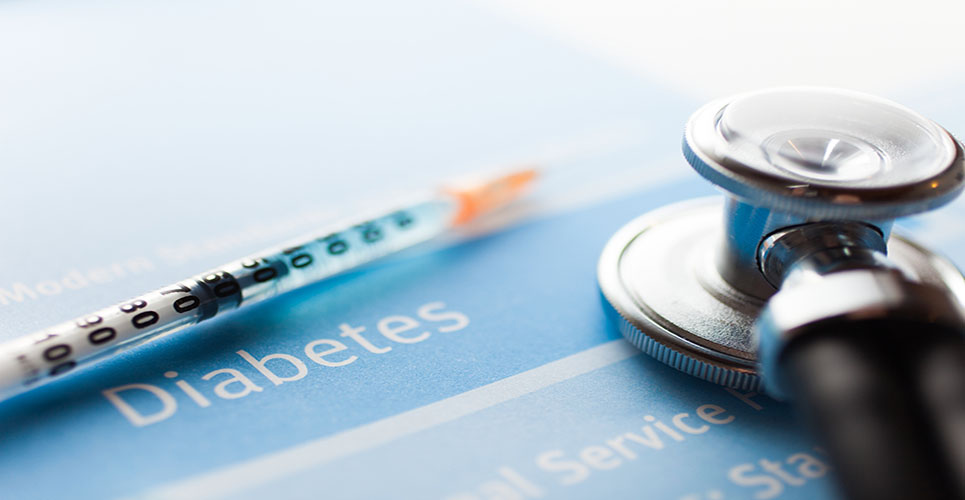New analyses of Phase 3a IDegLira (insulin degludec /liraglutide; Xultophy®) DUALTM study data show an early and substantial improvement in glycaemic control, and a beneficial weight profile in type 2 diabetes patients compared to insulin degludec.
New analyses of Phase 3a IDegLira (insulin degludec /liraglutide; Xultophy®) DUALTM study data show an early and substantial improvement in glycaemic control, and a beneficial weight profile in type 2 diabetes patients compared to insulin degludec.
These benefits were demonstrated from as early as four weeks after treatment initiation in both insulin-nai?ve and insulin-treated patients. (1) Novo Nordisk received a positive CHMP opinion for Xultophy® in the EU on 24 July 2014 and expects to receive final marketing authorisation from the European Commission within 100 days of this date. (3)
IDegLira-treated patients also had a greater likelihood of reaching both pre- (before meal) and post-prandial (after meal) blood glucose targets, compared with either insulin degludec or liraglutide, suggesting increased predictability with treatment. (2)
“Many people with type 2 diabetes in the UK fail to reach their blood glucose targets. The progressive nature of this condition often requires patients to initiate and then intensify insulin treatment. Patients and clinicians may be hesitant to do this due to the increased risk of hypoglycaemia and weight gain,” commented Professor Jiten Vora, Consultant Endocrinologist at The Royal Liverpool and Broadgreen University Hospital NHS Trust.
He continued: “New treatments that demonstrate the ability to reach glycaemic targets with better predictability and tolerability are of vital importance in the management of type 2 diabetes as they offer the potential to increase adherence, reduce diabetes-related complications and improve patient outcomes.”
Gwen Hall, Diabetes Specialist Nurse, Portsmouth Community Diabetes Service noted: “Type 2 diabetes is progressive, yet many people who live with it are reluctant to increase their medication as their care team advise. This may be due to unwarranted side effects such as weight gain and hypoglycaemia (low blood sugar), or the need for an increasing number of injections. The DUALTM data show promise in addressing all those concerns, providing healthcare professionals, and people with diabetes, with a novel approach to managing their condition while minimising the impact of diabetes on their day-to-day lives.”
In the DUALTM I clinical trial, the proportion of people achieving fasting plasma glucose ≤7.2 mmol/L at week 4 was greater with IDegLira (76%) than with insulin degludec (62%; p<0.0001) or with liraglutide (62%; p<0.0001). At week 8 the proportion of people achieving glycated haemoglobin (HbA1c) ?7% was greater with IDegLira (57%) than with insulin degludec (38%; p<0.0001) or with liraglutide (47%; p<0.0001). At weeks 4, 8 and 12 in DUALTM I, treatment with IDegLira also resulted in significant weight reduction compared with insulin degludec, which was associated with an overall weight gain (p<0.0001 at weeks 4, 8 and 12).
Weight reduction with IDegLira was less than that achieved with liraglutide 1.8 mg alone. Results from DUALTM II were consistent with DUALTM I findings for IDegLira and insulin degludec. (1)
Results showed IDegLira enabled more patients to reach the recommended pre- and post-prandial target ranges, compared with administration of its individual components. The proportion of people with type 2 diabetes at the end of the trials with breakfast, lunch and dinner post-prandial blood glucose values within the target of ?9 mmol/L was significantly higher with IDegLira treatment (DUALTM I: 51%; DUALTM II: 37%), than with insulin degludec treatment (DUALTM I: 38%; p<0.0001; DUALTM II: 25%; p=0.0093) or with liraglutide (DUALTM I: 36%; p<0.0001). The likelihood of achieving all four pre- prandial blood glucose values (before meals and bedtime), within the recommended range of ≥3.9 to ≤7.2 mmol/L, was significantly greater with IDegLira treatment (DUALTM I: 48%; DUALTMII: 44%) than with insulin degludec treatment (DUALTM I: 41%; p=0.0204; DUALTM II: 27%; p=0.0008) or with liraglutide treatment (DUALTM I: 32%; p<0.0001). Improved pre- and post-prandial blood glucose levels suggest that the predictabily of glycaemic control within one day is increased with IDegLira. (2)
In the clinical trial programme there were no apparent differences between IDegLira, insulin degludec and liraglutide with respect to adverse events. As expected, IDegLira had a similar tolerability and safety profile to each of its mono-components. (4,5)
References:
- Vilsbøll T et al. IDegLira, a combination of insulin degludec and liraglutide, enables patients with type 2 diabetes to reach target glycaemic control faster than its individual components alone. Poster presentation (PS063) at the 50th European Association for the Study of Diabetes (EASD) annual meeting, 17 September 2014.
- King A et al. IDegLira, a combination of insulin degludec and liraglutide, improves both pre- and postprandial plasma glucose in patients with type 2 diabetes. Oral presentation (OP43) at the 50th European Association for the Study of Diabetes (EASD) annual meeting, 19 September 2014.
- EMA Summary of Opinion (initial authorisation): Xultophy®. Available at: http://www.ema.europa.eu/docs/en_GB/document_library/Summary_of_opinion_-_Initial_authorisation/human/002647/WC500170171.pdf. Accessed September 2014.
- Gough S, et al. Efficacy and safety of a fixed-ratio combination of insulin degludec and liraglutide compared to each of its components given alone: results of a phase 3, randomised, 26-week, treat-to-target trial in insulin-nai?ve patients with type 2 diabetes. Lancet Diabetes & Endocrinol 2014; doi:10.1016/S2213-8587(14)70174-3.
- Buse JB, et al. Contribution of liraglutide in the fixed-ratio combination of insulin degludec and liraglutide (IDegLira), Diabetes Care Epub ahead of print. DOI:#10.2337/dc14-0785.
- Tresiba? Summary of Product Characteristics (SPC). Bagsvard, Denmark, Novo Nordisk A/S; 2014.
- Victoza? Summary of Product Characteristics (SPC). Bagsvard, Denmark, Novo Nordisk A/S; 2014.
- Gough S, et al. One-year efficacy and safety of IDegLira in patients with type 2 diabetes. Diabetes 2014; 63 (Suppl. 1):A117 (65OR).

